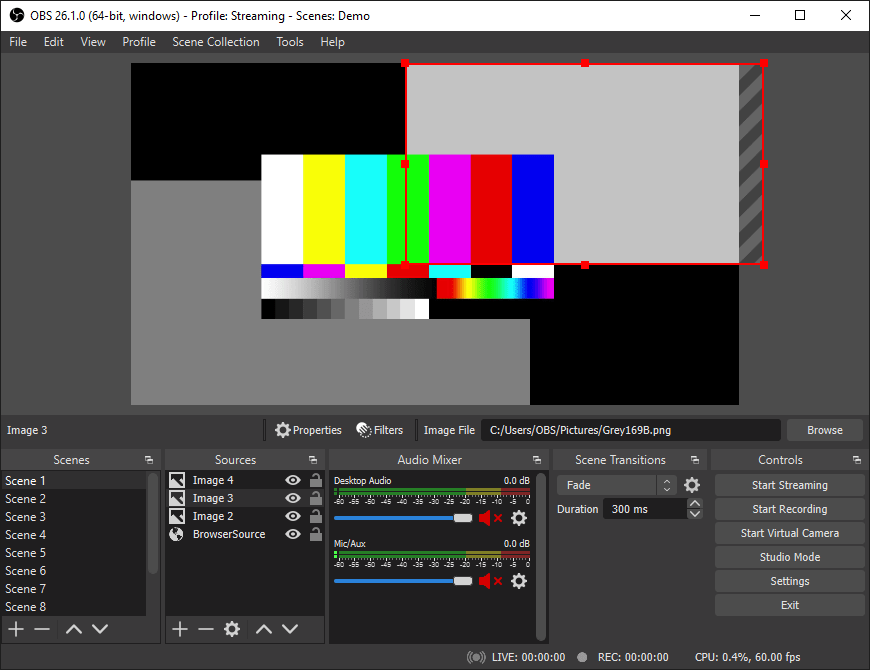How To Install OBS Studio on Linux Mint 22

OBS Studio has become an indispensable tool for content creators, streamers, and professionals who need to capture and broadcast high-quality video on their computers. For Linux Mint users, installing OBS Studio opens up a world of possibilities for screen recording, live streaming, and video production. In this comprehensive guide, we’ll walk you through the process of installing OBS Studio on Linux Mint 22, exploring various methods and providing valuable insights to ensure a smooth setup experience.
What is OBS Studio?
OBS Studio, short for Open Broadcaster Software Studio, is a powerful, open-source application designed for video recording and live streaming. It offers a wide range of features that make it a favorite among content creators and professionals alike. Some key features include:
- Real-time video/audio capturing and mixing
- Unlimited scenes and sources
- Live streaming to popular platforms like Twitch, YouTube, and Facebook
- High-performance audio mixer with filters
- Intuitive interface for easy scene composition
- Support for a wide range of plugins and extensions
For Linux Mint users, OBS Studio provides a robust solution for creating tutorials, recording gameplay, hosting webinars, or streaming live events. Its compatibility with Linux systems makes it an excellent choice for those who prefer open-source alternatives to proprietary software.
System Requirements
Before proceeding with the installation, ensure that your Linux Mint system meets the following requirements:
Hardware Requirements:
- A multi-core CPU (the more cores, the better)
- 4GB RAM (8GB or more recommended for complex scenes)
- Graphics card compatible with OpenGL 3.3 or later
- Sufficient storage space for recordings (SSD recommended for better performance)
Software Prerequisites:
- Linux Mint 22 (or later) installed and up-to-date
- Internet connection for downloading OBS Studio and its dependencies
Preparation Steps
Before installing OBS Studio, it’s crucial to prepare your Linux Mint system to ensure a smooth installation process:
1. Update Linux Mint
Open the terminal and run the following commands to update your system:
sudo apt update
sudo apt upgrade2. Check for Conflicting Software
Ensure that you don’t have any conflicting software or older versions of OBS Studio installed. If you do, remove them using the Software Manager or the terminal command:
sudo apt remove obs-studioInstallation Methods
There are several methods to install OBS Studio on Linux Mint 22. We’ll cover three popular approaches: using the Software Manager, installing via the terminal, and using Flatpak. Each method has its advantages, so choose the one that best suits your preferences and needs.
Method 1: Installing via Software Manager
The Software Manager is the easiest and most user-friendly way to install OBS Studio on Linux Mint 22. Follow these steps:
- Open the Software Manager from the application menu.
- In the search bar, type “OBS Studio”.
- Locate OBS Studio in the search results and click on it.
- Click the “Install” button.
- Enter your password when prompted to authorize the installation.
- Wait for the installation to complete.
Pros:
- Simple and straightforward process
- No need to use terminal commands
- Automatic updates through the Software Manager
Cons:
- May not always have the latest version available
- Limited control over installation options
Method 2: Installing via Terminal
For users who prefer more control and potentially access to the latest versions, installing OBS Studio via the terminal is an excellent option. This method involves adding the OBS Project PPA (Personal Package Archive) to your system. Follow these steps:
- Open the terminal.
- Add the OBS Studio PPA by running the following command:
sudo add-apt-repository ppa:obsproject/obs-studio- Update the package list:
sudo apt update- Install OBS Studio:
sudo apt install obs-studioPros:
- Access to the latest stable versions
- More control over the installation process
- Ability to easily update using terminal commands
Cons:
- Requires basic knowledge of terminal commands
- Slightly more complex than using the Software Manager
Method 3: Installing via Flatpak
Flatpak is a universal package management system that allows for easy installation and updates of applications across different Linux distributions. To install OBS Studio using Flatpak:
- Ensure Flatpak is installed on your system. If not, open the terminal and run:
sudo apt install flatpak- Add the Flathub repository:
flatpak remote-add --if-not-exists flathub https://flathub.org/repo/flathub.flatpakrepo- Install OBS Studio:
flatpak install flathub com.obsproject.StudioPros:
- Sandboxed installation for improved security
- Easy to update and manage
- Consistent experience across different Linux distributions
Cons:
- May have slightly larger file size due to bundled dependencies
- Potential for minor performance overhead
Post-Installation Setup
After successfully installing OBS Studio, it’s important to perform some initial configuration:
- Launch OBS Studio from the application menu or by typing
obsin the terminal. - Run the Auto-Configuration Wizard to optimize settings for your system.
- Set up your audio inputs:
- Go to Settings > Audio
- Configure your microphone and desktop audio devices
- Add video sources:
- Click the “+” icon in the Sources box
- Choose from options like Display Capture, Window Capture, or Video Capture Device
- Test your audio and video sources to ensure they’re working correctly.

Troubleshooting Common Issues
While installing and using OBS Studio on Linux Mint 22, you may encounter some common issues. Here are solutions to frequent problems:
Missing Dependencies
If you encounter missing dependencies, try installing them manually:
sudo apt install ffmpeg libavcodec-extraAudio/Video Capture Problems
- Ensure your devices are properly connected and recognized by Linux Mint.
- Check the audio mixer in OBS Studio to verify input levels.
- For video issues, try different capture methods (e.g., switch from Display Capture to Window Capture).
Performance Issues
- Lower your output resolution and frame rate in OBS settings.
- Use hardware encoding if available (Settings > Output > Encoding).
- Close unnecessary applications to free up system resources.
Optimizing OBS Studio for Linux Mint
To get the best performance out of OBS Studio on Linux Mint 22, consider these optimizations:
- Use the x264 encoder with the “veryfast” CPU preset for a good balance of quality and performance.
- Enable Performance Mode in OBS (Settings > Advanced > Performance Mode).
- If you have a compatible NVIDIA GPU, enable NVENC encoding for improved performance.
- Adjust the Process Priority to “High” or “Above Normal” in Settings > Advanced.
Updating OBS Studio
Keeping OBS Studio up-to-date ensures you have the latest features and bug fixes. The update method depends on how you installed the software:
- If installed via Software Manager or PPA: Updates will be available through the system’s update manager.
- For Flatpak installations: Use the command
flatpak updateto check for and install updates.
It’s recommended to check for updates regularly to ensure optimal performance and security.
Congratulations! You have successfully installed OBS Studio. Thanks for using this tutorial for installing the latest version of the OBS Studio open source software for video recording and live streaming on the Linux Mint 22 system. For additional help or useful information, we recommend you check the official OBS Studio website.